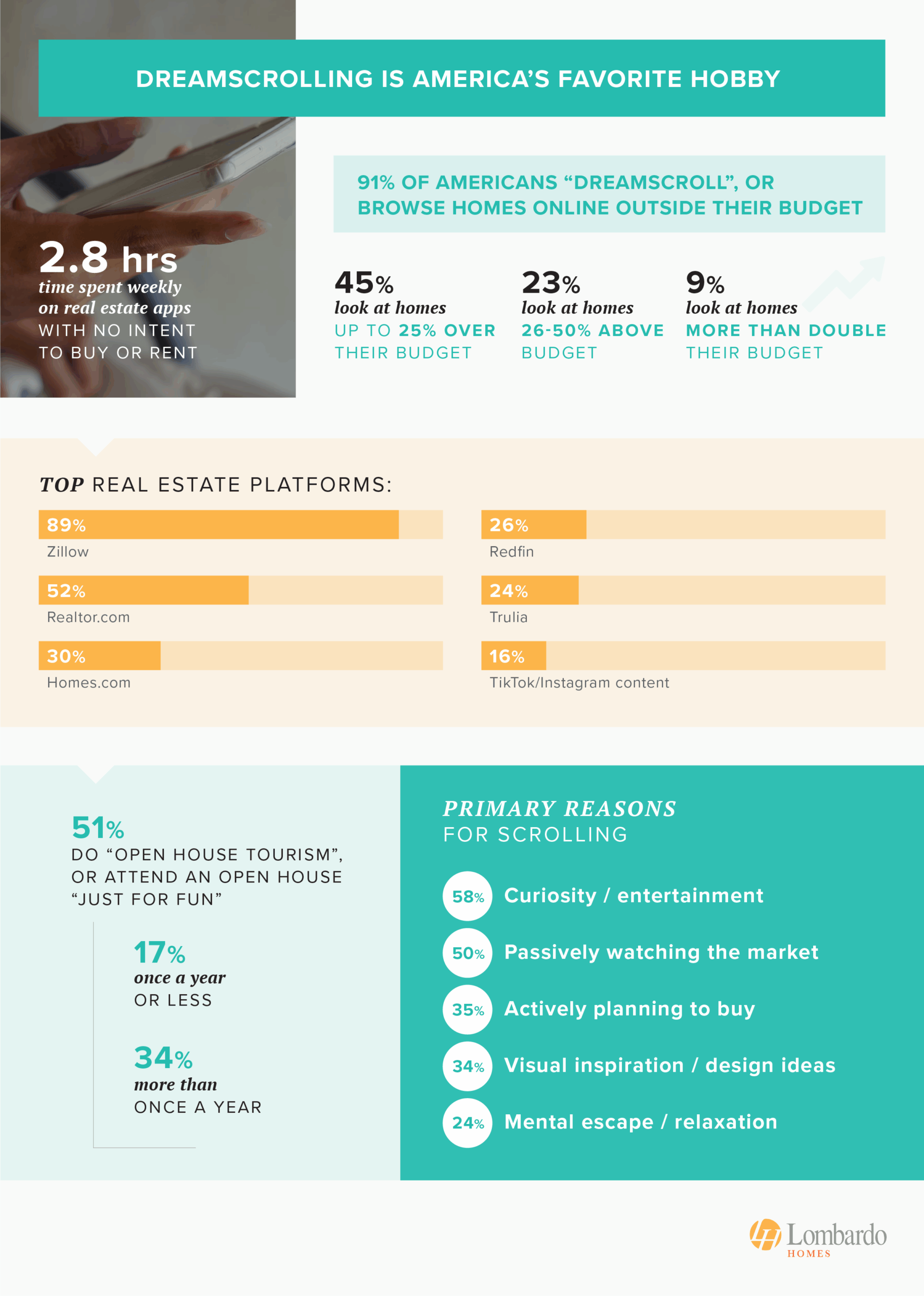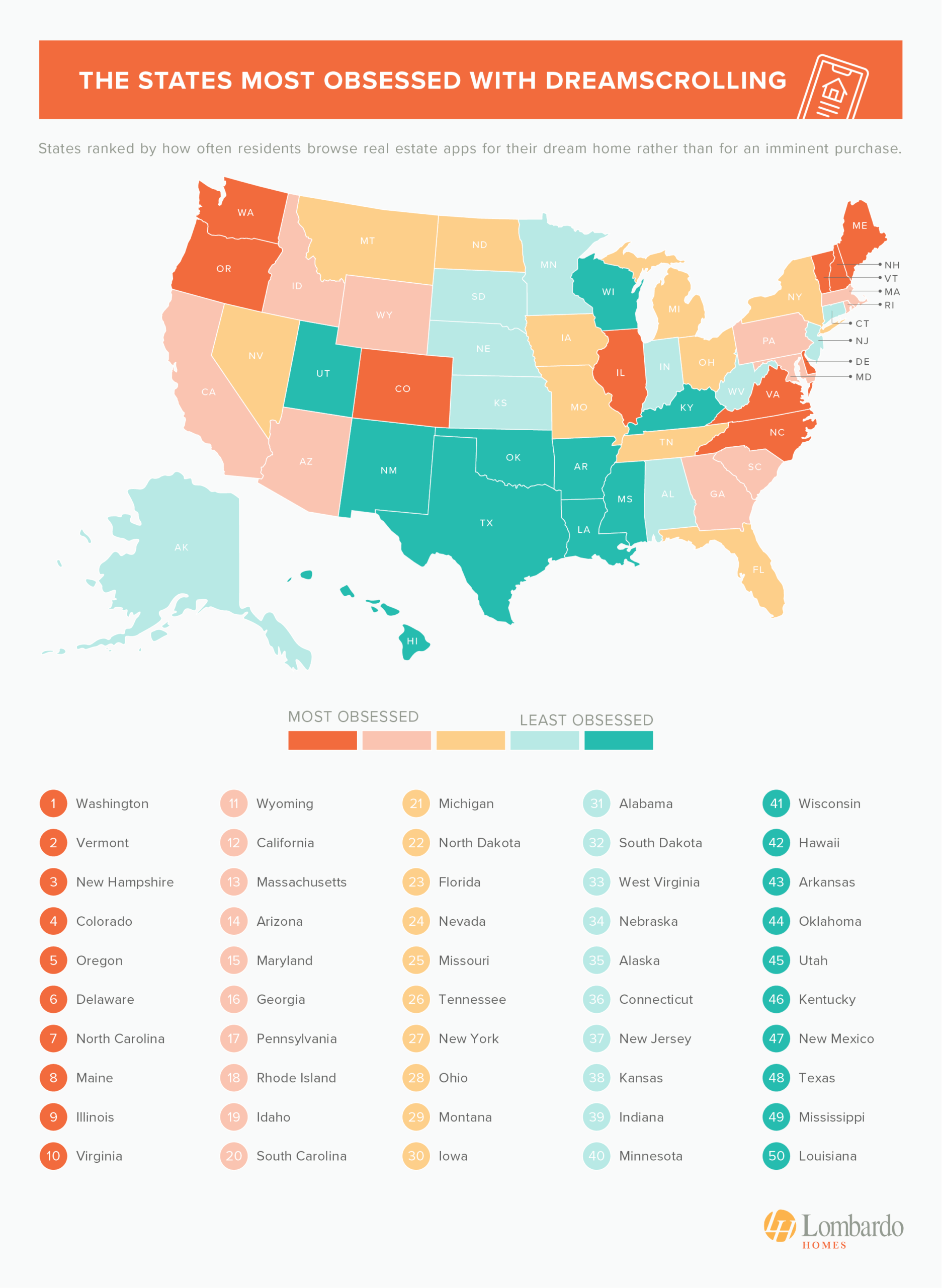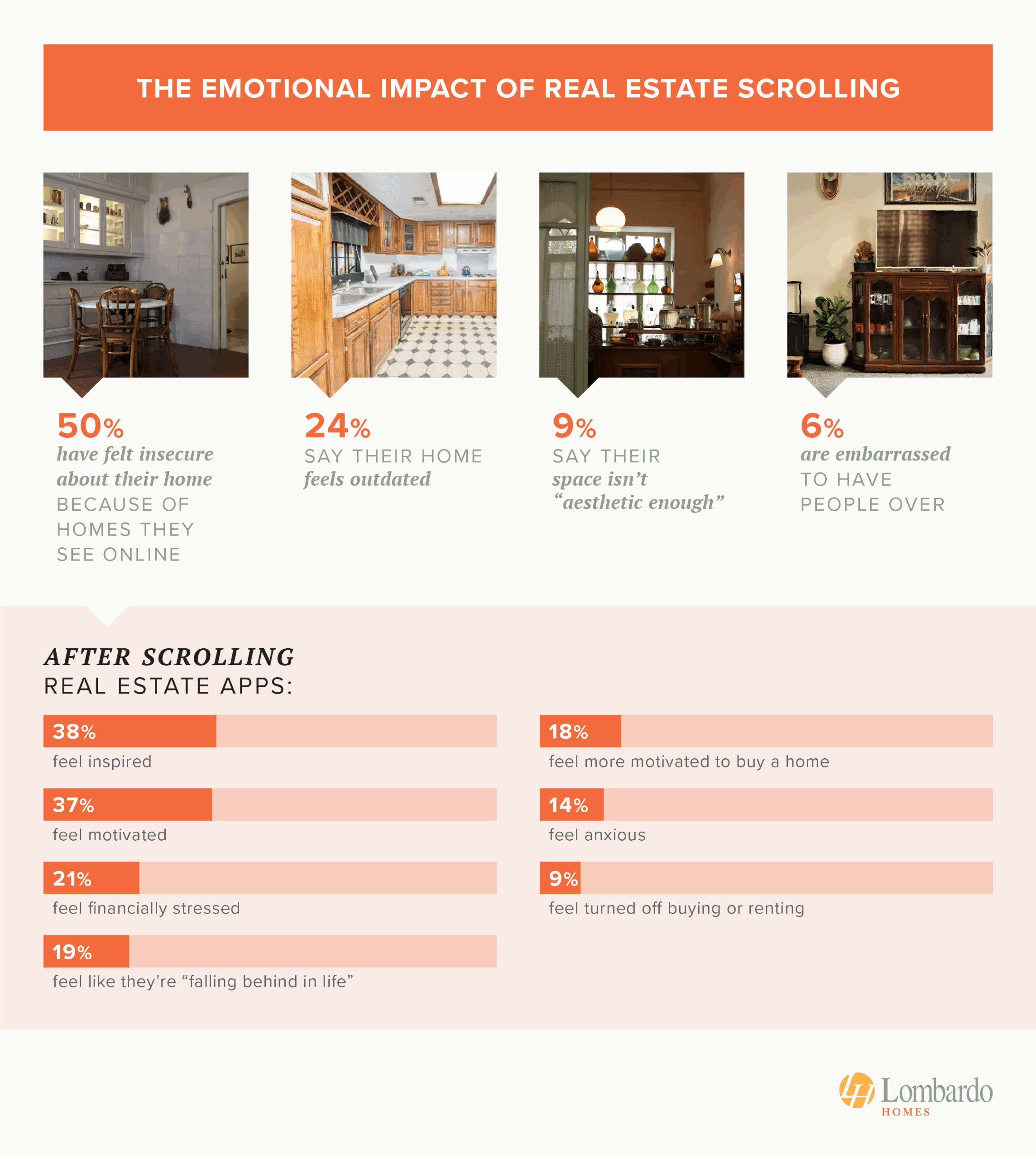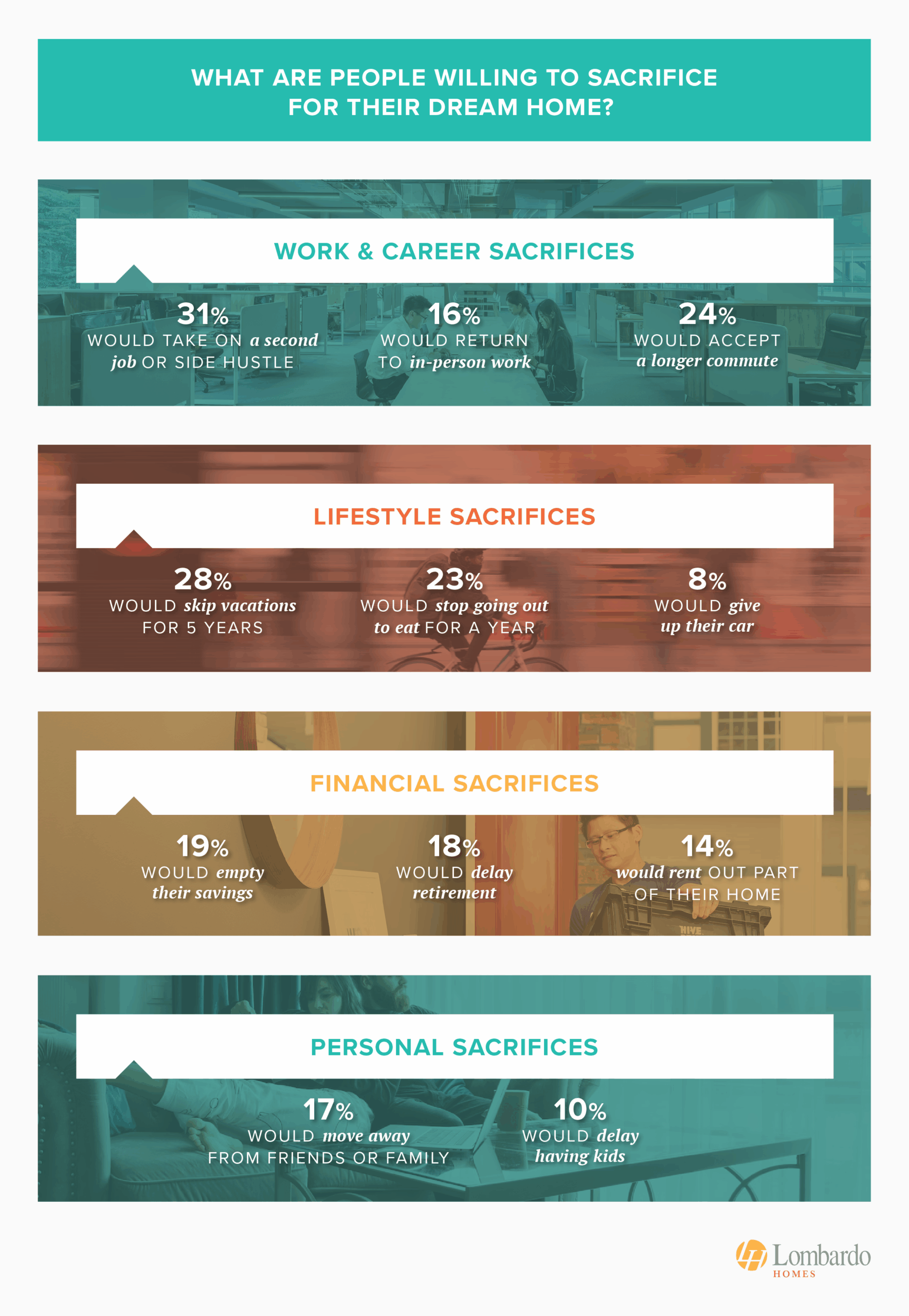
What used to be a late-night scroll through social media has turned into a new American obsession: real estate apps. Even if people aren’t planning a move, they can’t resist browsing dream homes far beyond their budgets, a pastime better known as dreamscrolling. In fact, 91% of Americans admit to doing it, and the average person spends about 3 hours per week scrolling listings with no intent to buy or rent.

Most people don’t just browse homes within reach. Nearly half of Americans look at homes up to 25% over their budget, while almost one-quarter stretch even further, browsing properties that are 26 to 50% above what they could reasonably afford. A bold 9% of Americans go all in, spending their time scrolling homes that are more than double their budget.
When it comes to platforms, Zillow is by far the most popular choice, with 89% of dreamscrollers using it, followed by Realtor.com at 52%, Homes.com at 30%, Redfin at 26%, and Trulia at 24%. The trend also extends beyond traditional real estate apps, with 16% saying they dreamscroll on TikTok or Instagram by watching home content through social media.
The reasons people dreamscroll vary widely, but curiosity and entertainment top the list at 58%. Half of Americans say they use it to passively watch the market, while 35% admit to actively planning for a purchase in the future. For 34%, dreamscrolling provides visual inspiration or design ideas, while 24% say it’s simply a mental escape that helps them relax.
The obsession doesn’t stop at online browsing, with 51% of Americans saying they participate in “open house tourism,” where they attend open houses just for fun. Of those, 17% go once a year or less, while 34% say they go more than once annually.
Dreamscrolling is universal, but some states are more hooked than others. Our study examined 4,548 Google search terms related to real estate apps and scrolling habits to determine the states that dreamscroll the most:
Delaware, North Carolina, Maine, Illinois, and Virginia all make the top ten, showing that dreamscrolling is not just confined to one region of the country.

At the other end of the spectrum, states like Louisiana, Mississippi, and Texas rank among the lowest for dreamscrolling activity. That doesn’t mean residents aren’t engaging in the trend, but compared to their peers in the Pacific Northwest and New England, they are less likely to spend hours swiping through real estate listings for homes they don’t plan to buy.

While dreamscrolling may begin as a lighthearted distraction, it comes with very real emotional consequences. Half of Americans say that looking at aspirational homes online makes them feel insecure about their current living situation. Nearly 1 in 4 feel like their own home is outdated, while 9% say their space doesn’t feel “aesthetic enough” compared to what they see online. Another 6% admit they are embarrassed to have people over after spending too much time looking at picture-perfect homes.
The stress isn’t limited to appearances. Twenty-one percent of Americans say dreamscrolling leaves them feeling financially strained, while 19% report that it makes them feel as though they are falling behind in life and 14% say it stirs up feelings of anxiety.
Yet, for many, the emotional impact isn’t entirely negative. Thirty-eight percent of dreamscrollers say they come away feeling inspired, while 37% say it motivates them to work toward improving their living situation. For 18%, scrolling even increases motivation to buy a home in the future, while only 9% say the practice discourages them from homeownership altogether.

If dreamscrolling sparks lofty daydreams, it also inspires hard choices. We asked Americans what they would be willing to give up in order to make their dream home a reality, and the results show just how far people are willing to go.
Nearly one-third of Americans say they would take on a second job or side hustle to afford the home they truly want. Others would make major lifestyle shifts, with 16% saying they would return to in-person work and 24% agreeing to accept a longer commute if it meant securing their dream property. Vacations and leisure time are also on the chopping block: 28% of Americans say they would skip vacations for the next five years, while 23% would stop going out to eat for a full year. A smaller but notable 8% even say they would give up their car.
The financial sacrifices people are willing to make are just as stark. Nearly 1 in 5 (19%) would empty their savings to buy their dream home, while 18% would push back retirement and 14% would rent out part of their house to make it work. On a personal level, 17% of Americans say they would be willing to move away from friends or family, and 10% say they would delay having children if it meant affording their ideal home.
In August 2025, Lombardo Homes surveyed 1,000 Americans about their real estate browsing habits, emotional responses, and sacrifices they’d make for a dream home. Respondents were 50% female, 49% male, and 1% nonbinary, with an age range of 18 to 76 and an average age of 39. In August 2025 we analyzed 4,548 Google search terms related to real estate apps, scrolling, and Americans’ dream homes to complete this study. We looked at search volume per capita averages over the past 12 months for state-level data.
For media inquiries, contact [email protected]
Fair Use
When using this data and research, please attribute by linking to this study and citing lombardohomes.com